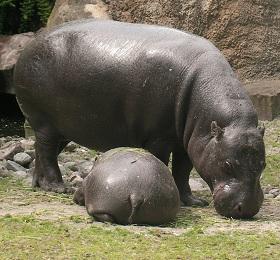Using AI to control energy for indoor agriculture
30 September 2024
Published online 18 March 2012

Equal opportunity between the sexes, at least in a matter of numbers, exists for the embryos of many species. But some animals seem to exert some level of control in determining the sex of offspring, whether it be male or female, to shift the sex balance of populations in certain circumstances.
A team of researchers, led by Joseph Saragusty, a researcher at the Leibniz Institute for Zoo and Wildlife Research in Berlin, and including Tim Bouts, director of Al Wabra Wildlife Preservation in Qatar, studied a population of captive pygmy hippopotami (Choeropsis liberiensis) in which only 41% of offspring were male. While most previous studies focused on how females can shift the offspring sex balance, the researchers chose to focus on the male, and report their results in Nature Communications.
The researchers employed fluorescence in situ hybridization, a method that coloured the sperms of each hippo with either X- or Y- chromosome specific dyes. They counted more sperms carrying the X-chromosome, which results in a female calf. The ratio of all male captive births was approximately 42%, similar to the ratio of X- and Y-chromosome-bearing spermatozoa in the hippo ejaculate.
The males and females seem to agree on promoting the formation of more female embryos, with each exerting control in their own way and each contributing to the bias in the offspring population.
The male pygmy hippopotamus probably has a mechanism that selects or diminishes one type of sperm, but the researchers are unsure how they do it. If whatever mechanism involved is not unique to the male pygmy hippopotamus, then it might be present in other mammals and may explain several shifts that were previously not understood.
"I think probably three lines of investigation should stem from our work," says Saragusty. The first is to study the wild population of the pygmy hippopotamus to determine if sex discrimination in sperm is unique to captive populations or not, then to look at other species and see if they exhibit a similar shift in ejaculate sex ratio. "The third would be the search for a mechanism for shifting the sperm sex ratio, a mechanism that is most probably active within the testis, during the process of spermatogenesis."
doi:10.1038/nmiddleeast.2012.33
Stay connected: